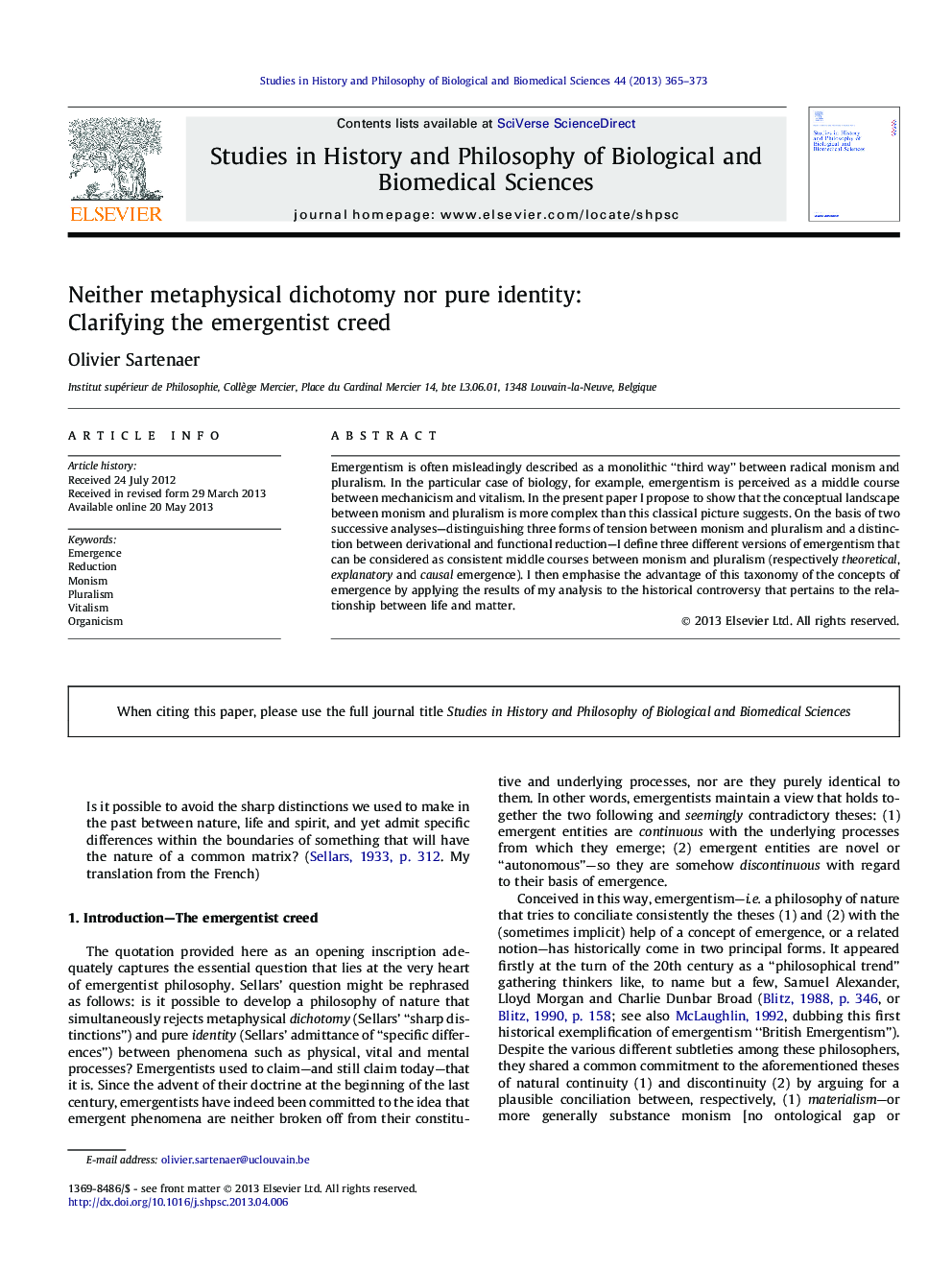| Article ID | Journal | Published Year | Pages | File Type |
|---|---|---|---|---|
| 1161766 | Studies in History and Philosophy of Science Part C: Studies in History and Philosophy of Biological and Biomedical Sciences | 2013 | 9 Pages |
•I distinguish three levels of tension between monism and pluralism.•I distinguish two models of reduction.•I define three different emergentist strategies to conciliate monism and pluralism.•They are middle courses between reductive physicalism and substance pluralism.•I apply the taxonomy of emergence to the controversy between vitalism and mechanism.
Emergentism is often misleadingly described as a monolithic “third way” between radical monism and pluralism. In the particular case of biology, for example, emergentism is perceived as a middle course between mechanicism and vitalism. In the present paper I propose to show that the conceptual landscape between monism and pluralism is more complex than this classical picture suggests. On the basis of two successive analyses—distinguishing three forms of tension between monism and pluralism and a distinction between derivational and functional reduction—I define three different versions of emergentism that can be considered as consistent middle courses between monism and pluralism (respectively theoretical, explanatory and causal emergence). I then emphasise the advantage of this taxonomy of the concepts of emergence by applying the results of my analysis to the historical controversy that pertains to the relationship between life and matter.
